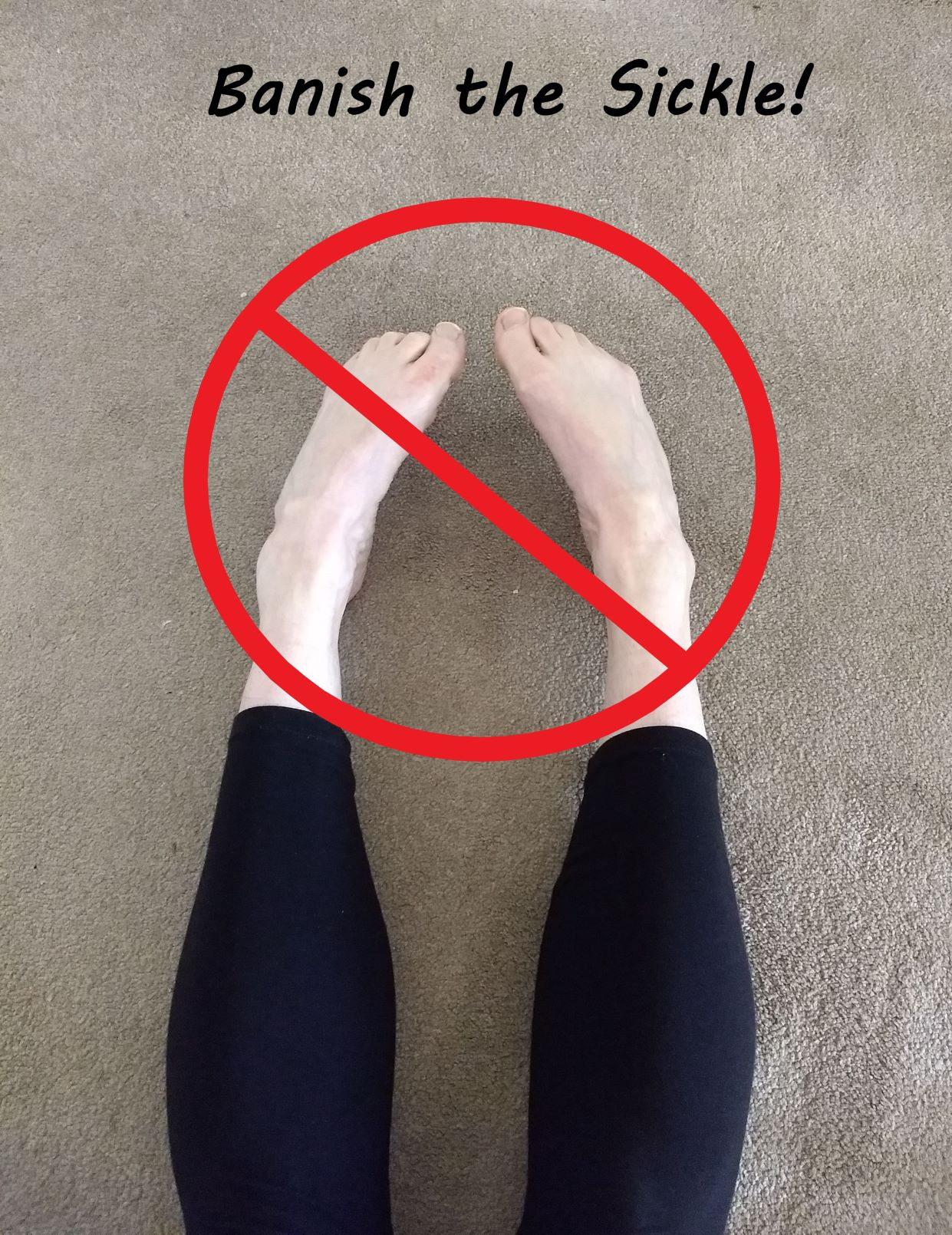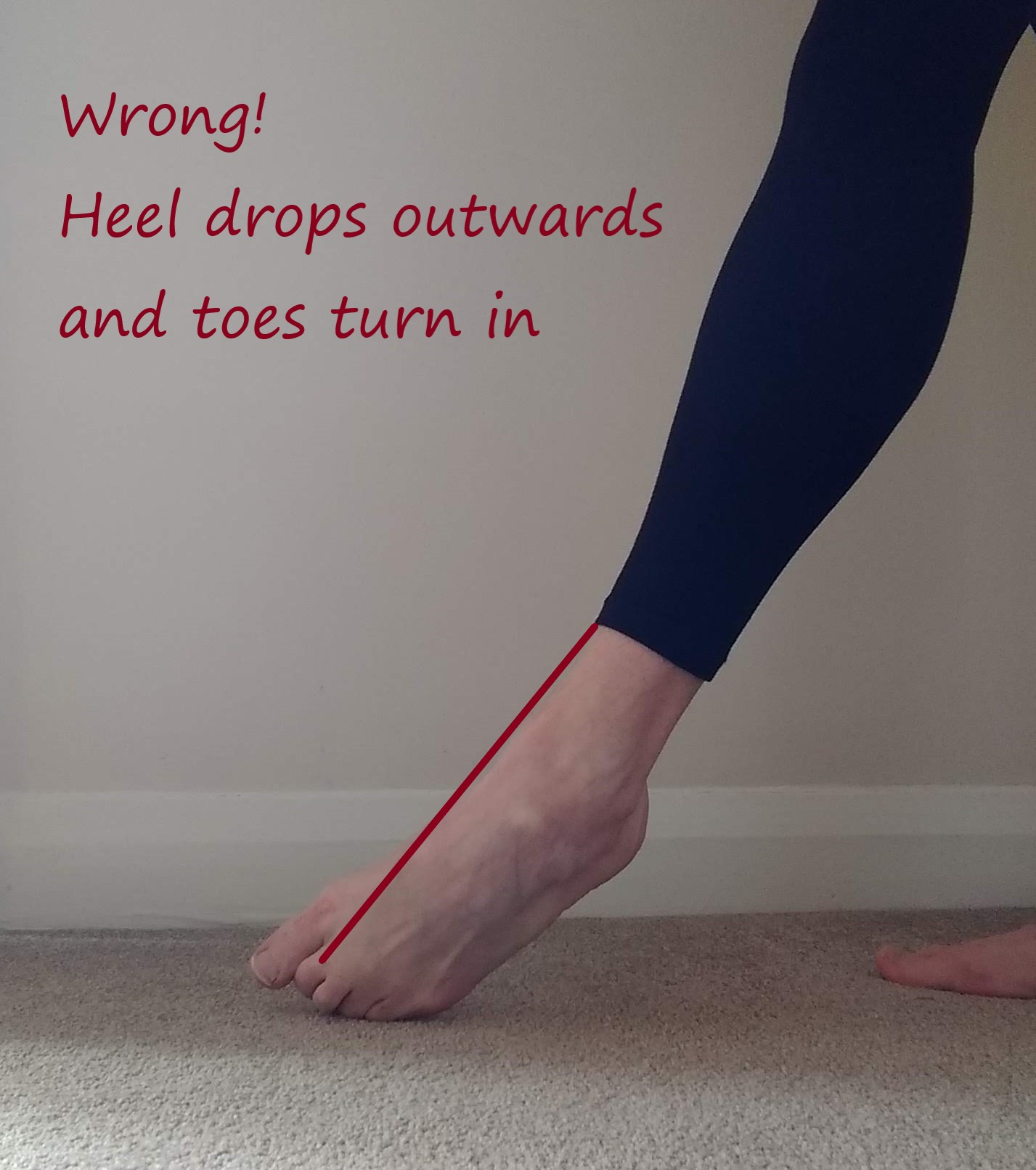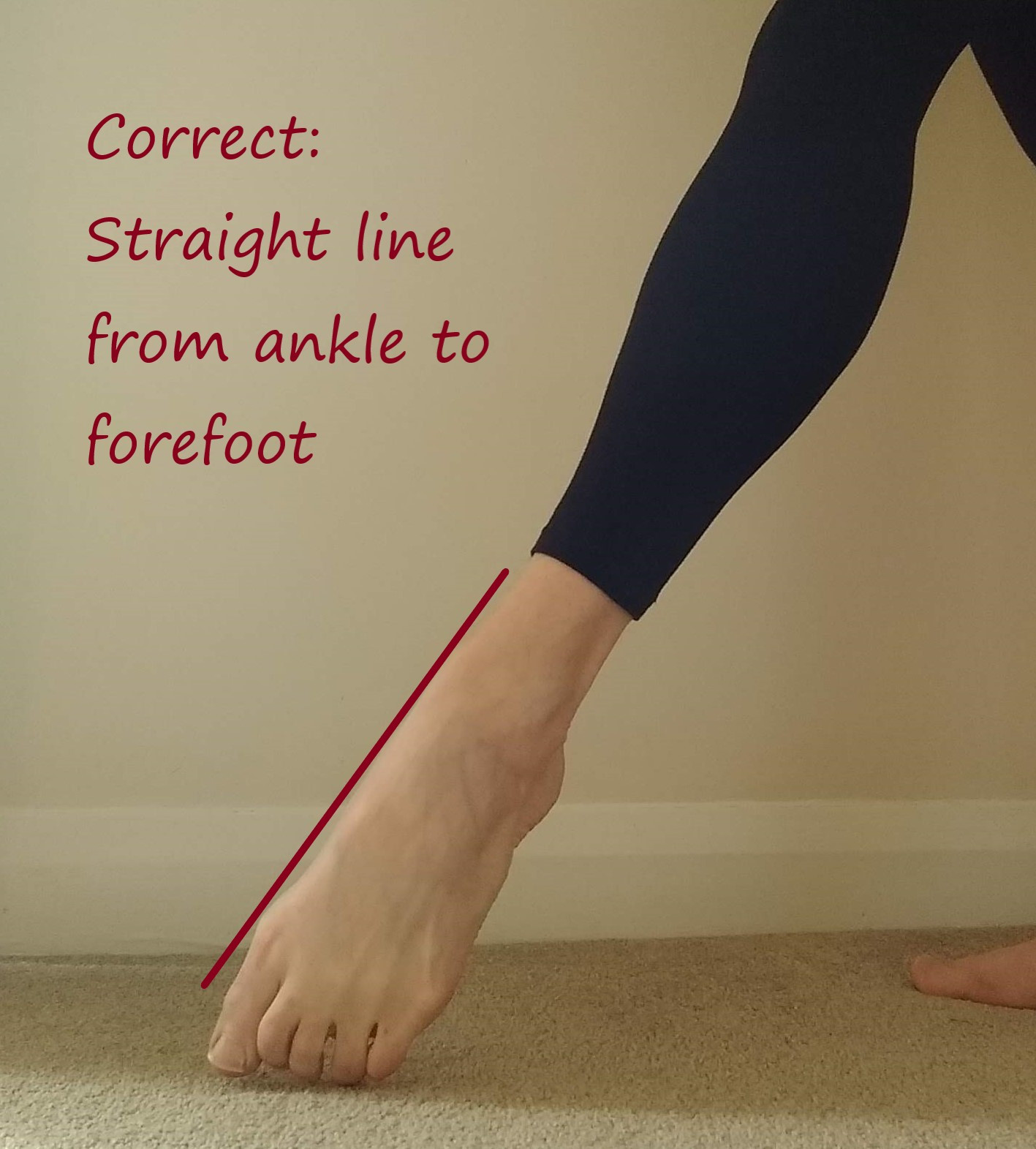Foot sickling is a prevalent issue among dance students, often arising when dancers push to extend their point range. This occurs when, in the effort to point further, the ankle joint rolls outwards, causing the foot to turn inwards, disrupting the crucial aesthetic lines sought after in dance. From an injury prevention and physiotherapy standpoint, sickling significantly elevates the risk of ankle injuries, particularly in demi-pointe and pointe work. The outward turning of the ankle in a sickled position increases the vulnerability to complete ankle collapse, potentially leading to painful ankle sprains.
 Example of sickled feet in ballet, showing incorrect ankle alignment and foot turning inwards.
Example of sickled feet in ballet, showing incorrect ankle alignment and foot turning inwards.
What Constitutes Correct Foot Alignment in Dance?
Determining correct foot alignment can vary slightly based on individual foot shapes. However, the general principle involves achieving a straight line from the inside of the ankle to the forefoot. Ideally, the big toe should align with this line or be positioned slightly inward, ensuring a balanced and stable foot position.
 Demonstration of a sickled foot in a tendu ballet position, highlighting the outward ankle collapse.
Demonstration of a sickled foot in a tendu ballet position, highlighting the outward ankle collapse.
 Correct foot alignment in a tendu ballet position, illustrating a straight line from ankle to forefoot and proper technique.
Correct foot alignment in a tendu ballet position, illustrating a straight line from ankle to forefoot and proper technique.
Root Causes of Sickled Feet in Dancers
The primary culprit behind foot sickling is typically weakness in the muscles of the foot and ankle. Specifically, insufficient strength in the peroneal muscles, located on the outside of the ankle, plays a significant role. Dancers with limited ankle and foot flexibility are also more prone to sickling. This is because the foot and ankle naturally possess a greater range of motion when turned inwards. Consequently, dancers may unconsciously sickle their feet to compensate and artificially extend their point range. Furthermore, poor motor control, often manifesting as ingrained bad habits, can contribute to persistent sickling. Anatomical predispositions and genetic variations in foot and ankle structure can also be underlying factors in a dancer’s tendency to sickle.
Effective Strategies to Correct Sickled Feet
Addressing and eliminating sickling requires a dual approach: strengthening the foot and ankle musculature and refining motor control. Prioritize exercises that specifically target the peroneal muscles on the outer ankle to build strength and stability. Alongside strength training, developing precise motor control is essential. This involves cultivating correct habits through consistent practice of fundamental movements like pointing the foot and rising to demi-pointe with proper alignment. Regular, focused practice helps the brain and neural pathways internalize the correct positioning, making it an automatic, subconscious action, rather than a consciously forced one. Importantly, enhancing strength and motor control in the foot and ankle is the most effective and safest method for functionally improving foot flexibility for dance. This approach is preferable to using foot stretchers, which may pose risks and are a topic for separate discussion.
Understanding the “Winged Foot” in Dance
The concept of a “winged foot,” where the heel projects forward while the forefoot and toes are positioned behind the ankle line, is often encouraged in dance, particularly for creating aesthetically pleasing lines in movements “en l’aire” (in the air). While visually appealing, similar to sickling, adopting a winged foot position in weight-bearing positions compromises ankle alignment and elevates injury risk. If dancers wish to practice winging the foot, it should be reserved for non-weight-bearing movements such as arabesque or attitude. It is crucial to achieve and consistently maintain a straight, correctly aligned foot before attempting to practice foot winging.
Recommended Exercises for Foot and Ankle Strength and Control
Here are two highly effective exercises to enhance foot and ankle strength and control, vital for correcting sickling and preventing injuries:
-
Single-Leg Demi-Plié and Relevé:
Fundamental exercises are often the most beneficial. This exercise simultaneously strengthens the feet, ankles, and calves while improving motor control. Its functional nature, mimicking movement patterns used in dance, makes it particularly effective. Beyond correcting foot position, this exercise is a cornerstone for injury prevention, building strength and endurance to safeguard against various calf, ankle, and foot injuries.
To perform, stand on one foot in parallel. Slowly execute a demi-plié and relevé, consciously maintaining correct foot and ankle alignment throughout the movement. Using a mirror or having someone observe can ensure proper positioning. Begin with 10 repetitions on each foot and progressively increase to 3 sets of 20 repetitions.
-
Point and Flex with Theraband Loop (Variation):
While pointing and flexing against a theraband is a common exercise, improper execution, particularly sickling or clawing the toes, can reinforce poor habits and potentially cause tendon stress. A modified theraband exercise can more effectively target the peroneal muscles crucial for preventing sickling. This variation enhances foot strength and control, safely improving functional pointe range – the usable range in dance movements.
Sit with legs extended in parallel. Secure a theraband around the forefeet, ensuring sufficient tension on the outer ankle when the foot and ankle are straight. Slowly point and flex the foot, maintaining correct alignment throughout the exercise.
For further progression, explore exercises in resources like “Banish the Sickle, Part 2” video, and consider incorporating eccentric heel drops, demonstrated in “Top 5 Injury Prevention Exercises,” to further strengthen and control the foot and ankle.

